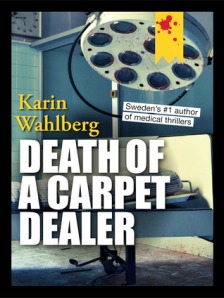
A Killing in the Hills
by Julia Keller
Headline, 2012
I thoroughly enjoyed this superb debut novel. Here is an author who not only can write, but clearly loves writing. A Killing in the Hills is a pleasure to read from start to finish.
What’s so good about this book is not the mechanics of the main crime plot (which do not work, in my opinion), but the characterisation, storytelling and atmosphere. The narrative is a layered one, and revelations about the layers occur at different points in the book, providing far more reader interest and engagement than is usual in a typical crime novel.
Belfa (Bell) Elkins is a prosecuting attorney in the impoverished West Virginia hamlet of Acker’s Gap. She was a trailer kid, but when she was about 10 her home burnt down – more is revealed gradually. As the book opens, a man walks into a diner, shoots three elderly men, and walks out. The aftermath of the shooting forms another narrative framework. One of the witnesses to the killing is Bell’s daughter Carla, who has just been to her teen anger-management course – and boy, does she need it! Another theme of the book is Bell’s relationship with Carla and with Sam, her ex-husband: all portrayed realistically and compellingly with an originality rarely encountered in contemporary crime fiction (which regularly features stroppy teenagers). Another theme is a case involving the death of a small boy in a game gone wrong: Bell has to decide on the charge to be made against the person responsible.
Bell is the heart of the book; her past, her professional life, her relationships with colleagues and an elderly couple she’s befriended, and her close, movingly portrayed friendship with the sheriff, Nick Fogelsong. All the characters, important or minor, are vividly conveyed, though the diner gunman is the least successful.
The intertwined plots play out against a beautiful portrayal of this rural area, a wonderful portrait of a community riven by poverty and hopelessness. The main story, that of the gunman and his actions subsequent to the initial shooting, is not credible in various ways – and the final revelations also lack believability. But this does not derail this excellent novel: there is so much to like about it that I can only urge you to read it for yourself, and discover this very talented author.
Although the cover of the book shows a beautiful picture of some mountains, here is an extract from the book:
This was what morning in West Virginia really meant, Chill thought. Not the pictures they were always sticking on postcards – sunrise over the mountains, the scooped-out gorges, and all the wildflowers – but a traffic jam in a 7-Eleven parking lot, the dirty pickups and the cars with mufflers hoisted up and tied there with rope. Kids crammed in the backseats, looking out the side windows, and if you looked back at them, they gave you the finger. Don’t see that on any postcard. Hell, no.
I received this book from Amazon Vine.
Aunt Agatha’s: another (glowing) review of this book.
YouTube: trailer for the book (very beautiful).
About the book at the publishers’ websites: Australia, USA (pdf) and UK. 












